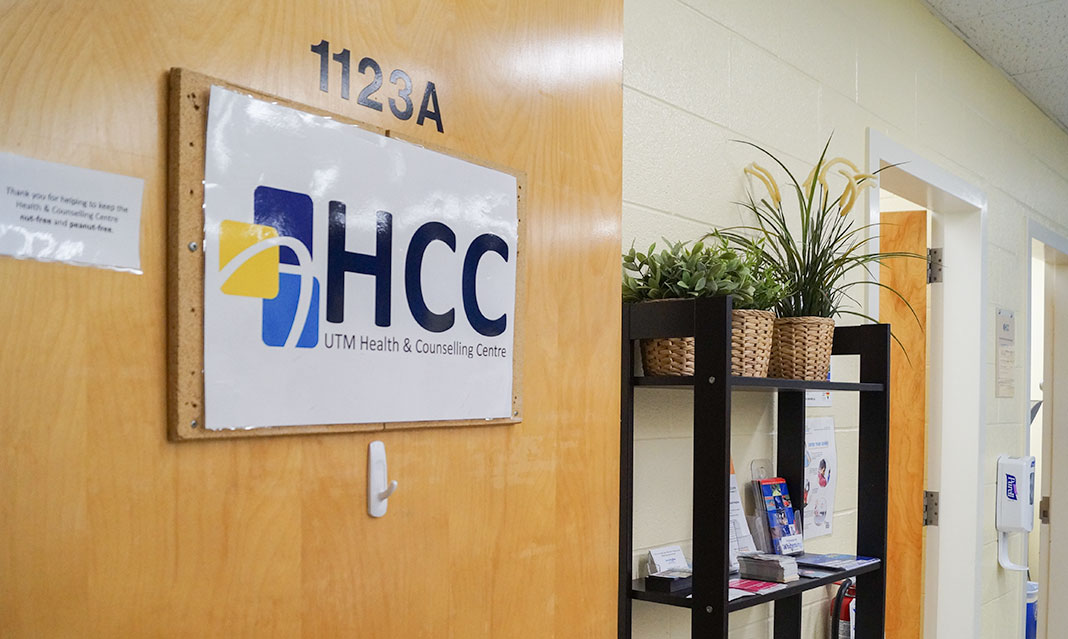Last Monday, the Academic Affairs Committee meeting presented UTM’s guidelines and existing policies in regards to accessibility and accommodations.
Andrea Carter, the assistant dean of student wellness, support and success, told The Medium in an email that among other U of T campuses, UTM is “becoming one of the most accessible for students struggling with physical and cognitive disabilities.”
“Every new building or major renovation accounts for accessibility in its design. It’s hard not to notice the features that contribute to accessibility on campus, from push buttons to wide hallways, accessible seating scattered throughout a lecture hall so users don’t have to sit up front, ramps, and clear signage,” wrote Carter. “I think it is important to recognize that these design features not only assist persons with mobility or other physical disabilities, but they create a more accessible environment for all of us.”
In 2005, the Ontario legislature passed the “Accessibility for Ontarians with Disabilities Act,” which aimed at making the province fully accessible to individuals struggling with disabilities by 2025. Since that time, public and private facilities, including institutions for higher education like U of T, have been investing in accessibility resources to meet the government deadline.
“Many of the standards are already in place, and we are meeting the requirements [of the AODA],” said Carter. “What I am most proud of is that we will not only achieve the minimum standard as set by the law, but we will also surpass the ‘compliance floor,’ and implement creative solutions that go beyond the expectations of legislation.”
“All construction guidelines, such as the Ontario Building Code and the AODA, are strictly adhered to for any new building or major renovation on campus,” added Carter, in reference to North Building Phase B. “I think that users will be impressed to see a finished project that not only accounts for physical disability but also visual impairments, cognitive and learning disabilities, and mental health needs.”
In her tenure at U of T, Carter acknowledged the spike in demand for mental health resources.
Mental health, among physical and learning disabilities, has become a burgeoning issue among university and college students across North America. Findings published as part of The National College Health Assessment in early 2016 reported an increase in the number of Canadian post-secondary students who have experienced various manifestations of mental health crises, such as depression or thoughts of suicide since the last of such reports in 2013.

“Like many universities, we are seeing an increase in mental health needs for our students,” Carter said, further elaborating that UTM has several mechanisms and outreach programs available on campus in order to cope with the influx of mental health crises.
According to Carter, there is a “comprehensive team of professionals” on campus that help students with their mental health needs. These professionals include professional advisors in the AccessAbility Resource Centre, a full-time mental health nurse and psychiatrist in the Health and Counselling Centre, and physicians who can offer triage and assessment.
Among other on-campus resources aimed at improving mental wellbeing and preventing mental health crises are discussion groups, offered regularly with HCC counsellors on topics such as healthy relationships, managing depression and anxiety, and managing eating disorders.
Carter also proposed that services to students living on campus were available in the form of “embedded counsellors.”
“Embedded counselling is offered within residence as well as at the International Education Centre,” Carter said. “Embedded counsellors help to remove some of the stigma when seeking supports by being a part of the community.”
Academic accommodations are readily available to all students on a case-by-case basis on the grounds of “individual needs and functional limitations,” according to Carter.
“At the end of the day, you can design a building with as many accessible features as possible, but if the people working inside the buildings don’t understand that they too contribute to an environment where all of the occupants can flourish, then we’ll only remain challenged,” Carter added.
Carter stated that students and faculty have the chance and are encouraged to take part in these initiatives, and to provide their feedback through the services or the Office of Student Affairs & Services.



